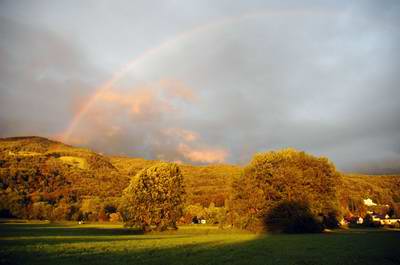Literature / Writers Datebook: December 10
Brief biography and a list of poems of famous poet Emily
Dickinson, one of the finest.
Emily Dickinson was an American poet, considered one of the greatest
poets in the English language.
Though virtually unknown in her lifetime, along with Walt Whitman, she has been regarded as one of the two quintessential American poets of the 19th century. Dickinson lived a hermetic life. Although she wrote numerous poems, only a handful of them were published during her lifetime, anonymously or probably without her knowledge.
Early Life of Emily Dickinson
Emily Elizabeth Dickinson was born on December 10, 1830, in Amherst, Massachusetts, to a prominent family well-known for their political and educational influence. Her grandfather, Samuel Fowler Dickinson, was one of the founders of Amherst College. Her father, Edward Dickinson, politically well-placed, was a lawyer and treasurer for the college. He also served on the Massachusetts General Court, the Massachusetts Senate, and the U.S. House of Representatives, to which in 1852 he was elected as a Whig candidate. Emily's mother, Emily Norcross Dickinson, was chronically ill.
Siblings
Her older brother, William Austin Dickinson, was usually known by his middle name. In 1856, he married Emily's best friend, Susan Gilbert, and made his home next door to the house in which Emily lived most of her life. Their younger sister, Lavinia Norcross Dickinson, called "Vinnie," encouraged the posthumous editing and publishing of her sister's poetry.
Education
In 1840, Emily was educated at the nearby Amherst Academy, a former boys' school which opened to female students just two years earlier. She studied English and classical literature, learned Latin and read the Aeneid over several years. She also learned other subjects including religion, history, mathematics, geology and biology.
At 17, Dickinson began attending Mary Lyon's Mount Holyoke Female Seminary which later become Mount Holyoke College in South Hadley. In less than a year at the seminary, she went back home and did not return to school. There is a speculation that she was homesick or that she refused to sign an oath stating she would devote her life to Jesus Christ.
Later Years
After that, Dickinson left home only for short trips to visit relatives in Boston, Cambridge, and Connecticut. For decades, popular wisdom portrayed Dickinson as an agoraphobic recluse. She lived most of her life in the family's houses in Amherst, which have been preserved as the Emily Dickinson Museum.
Emily Dickinson asked Susan, her best friend and sister-in-law to critique her poems. She died on May 15, 1886, from nephritis, reported as Bright's disease. After her death, her family found some 40 hand-bound volumes of more than 1700 of her poems.
Here's Dickinson's
quotation about pain, its timelessness and dominance:
"Pain has an Element of Blank;
It cannot recollect
When it begun, or if there was
A time when it was not."
"It has no future but itself;
Its infinite realms contain
Its past, enlightened to perceive
New periods of pain."
(From Pain)
Poems by Emily Dickinson
(Published
after she died)
Poems by Emily
Dickinson, 1890
Poems: Second
Series
Poems: Third
Series, 1896
Then Single
Hound, 1914
The Complete
Poems of Emily Dickinson, 3 vols.), 1955
The Letters of
Emily, 3 vols, 1958
Final Harvest,
1961
Image Credit:
Emily Dickinson. Wikipedia / Public Domain
Resources:
1. Goring, Rosemary, editor. Larousse Dictionary
of Writers. New York:
Larousse, 1994
2. McGovern, Una, editor. Chambers Biographical
Dictionary. Edinburgh:
Chambers Harrap, 2002
3. Emily Dickinson. Poetry Dickinson. Accessed December 10, 2022
4. Emily Dickinson. en.wikipedia.org. Accessed December 10 2008
(c) December 10, 2008. Updated December 10, 2022. Tel. Inspired Pen Web. All rights reserved.








